The Bands That Rocked Montgomery
From garage rehearsals to local stages, these were the voices of our generation
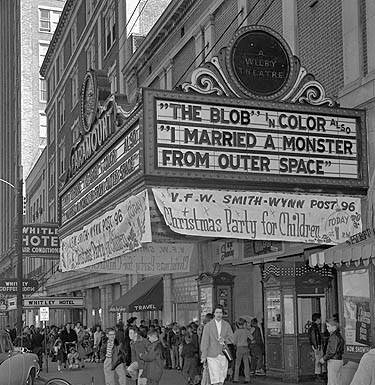
The Early Years
Years Active: 1955-1960
Montgomery Heralds the First Era of Rock and Roll Continue Reading
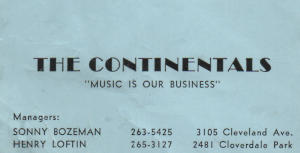
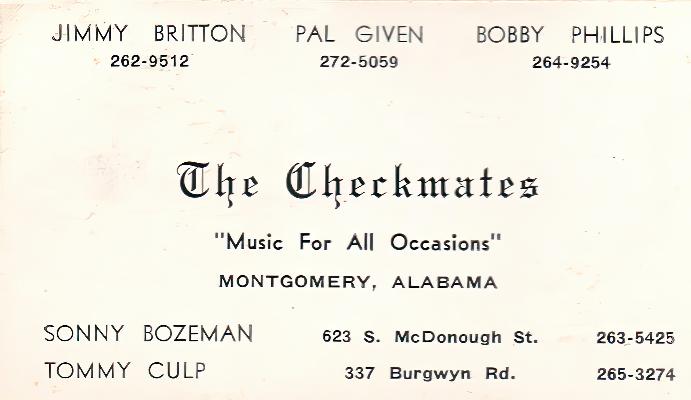
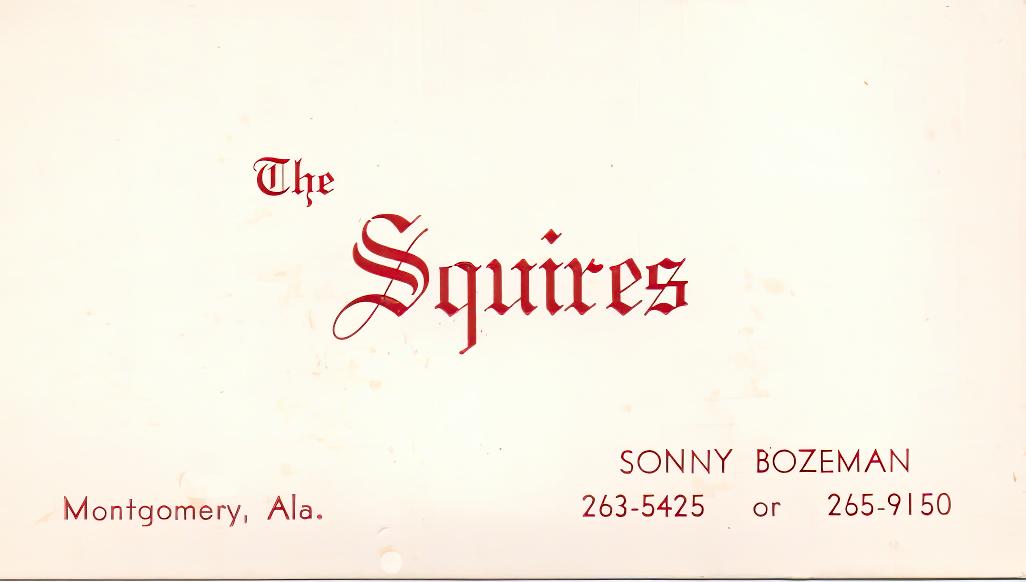
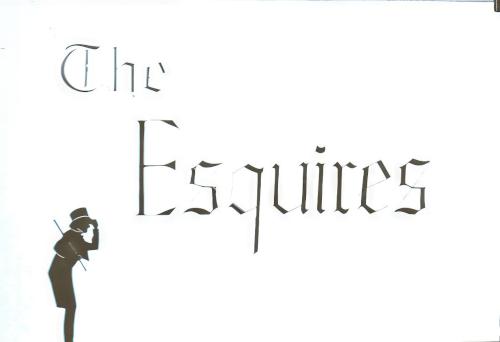
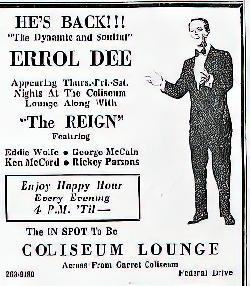
Preserving the Sound of a Generation
Celebrating the bands and rock pioneers of Montgomery from the 50's through the 60's
Explore the MusicFrom garage rehearsals to local stages, these were the voices of our generation

Years Active: 1955-1960
Montgomery Heralds the First Era of Rock and Roll Continue Reading





Capturing moments from Montgomery's musical golden age
The evolution of Montgomery's garage band scene
To paraphrase the Grateful Dead's lyricist, Robert Hunter, what a long, strange, fun, and
interesting trip it's been! We have tried to chronicle Montgomery's diverse music scene during
the formative years of pop and rock. We also want to apologize to all the musicians whose
name and stories were not included. Hopefully, their contributions will be told elsewhere.
Sincere thanks to all the guys who contributed their stories and a special thanks to my friend,
Willie G. Moseley, for his many contributions.
So much happened during the two decades we briefly glimpsed in this narrative. In
many ways, Montgomery and the period from the 1950s to the late 1960s was the greatest
time and place for a young person to play and perform rock and roll. The music was still being
invented and for a short time, you could almost be a star.
We lost way too many friends along the way. Rest in peace until we put the band back
together in the sky: Carlton Bridges, Tommy Culp, Pal Given, Henry Loftin, Sonny Royal, John
Thorington, Steve Whaley, Errol Dee and others. You were great musicians, and more
importantly, dear and special friends.
Musically yours,
Dr. William C. (Sonny) Bozeman
University of Central Florida Professor Emeritus
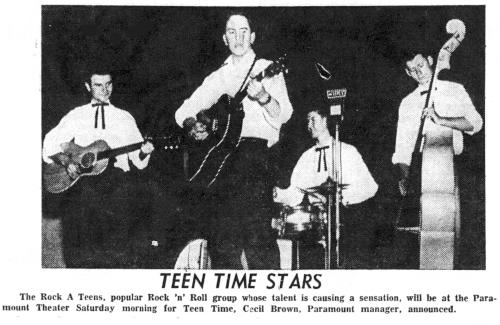 It is often seductive to remember (if you were there) or picture (if you were not around) the decade of the 1950s as a "simpler place and time." It may have been if you limit memories to I love Lucy, Leave It to Beaver, Your Hit Parade, sock hops, flashy cars, matinees and drive-in movies, and syrupy ballads like How Much Is That Doggie In the Window. However, rock and roll had certainly become the rage nationally by this time and was having a serious impact on American media. One of the first rock 'n' roll records to achieve national popularity was Rock Around the Clock made by Bill Haley and the Comets (used in the 1955 movie Blackboard Jungle). Tensions between teens and adults were also popularized in the 1955 film Rebel Without a Cause. Paralleling the changes in young people's musical tastes were the cold war, Russia's launch of Sputnik I, social unrest, and the threat of nuclear holocaust.
It is often seductive to remember (if you were there) or picture (if you were not around) the decade of the 1950s as a "simpler place and time." It may have been if you limit memories to I love Lucy, Leave It to Beaver, Your Hit Parade, sock hops, flashy cars, matinees and drive-in movies, and syrupy ballads like How Much Is That Doggie In the Window. However, rock and roll had certainly become the rage nationally by this time and was having a serious impact on American media. One of the first rock 'n' roll records to achieve national popularity was Rock Around the Clock made by Bill Haley and the Comets (used in the 1955 movie Blackboard Jungle). Tensions between teens and adults were also popularized in the 1955 film Rebel Without a Cause. Paralleling the changes in young people's musical tastes were the cold war, Russia's launch of Sputnik I, social unrest, and the threat of nuclear holocaust.
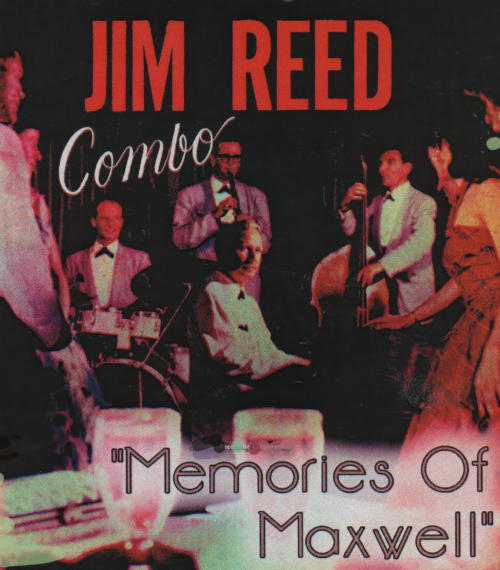 Certainly, Montgomery was not isolated from these sweeping changes and in some ways was the eye of the storm. The city was also blessed, however, with many great musicians. Hank Williams left a legacy of country music that remains a powerful force today. Like many places, road houses and bars such as Curly Williams's Spur or the Hi-Hat on the Mobile Highway fostered many C&W artists. WCOV-TV's "Bar 20 Barn Dance" was on Saturday nights and featured music by the Southern Pals Band and other guest performers. A notable and talented adult-oriented group was the Jim Reed Combo who performed for years at the Maxwell Field Officers Club. The Kitty Mann Trio out of Tallassee was another popular group. Early pop music teen bands included the Rock-A-Teens and the Rebelaires. Successful Black groups included Bobby Moore & the Rhythm Aces and Calvin & Clarence.
Certainly, Montgomery was not isolated from these sweeping changes and in some ways was the eye of the storm. The city was also blessed, however, with many great musicians. Hank Williams left a legacy of country music that remains a powerful force today. Like many places, road houses and bars such as Curly Williams's Spur or the Hi-Hat on the Mobile Highway fostered many C&W artists. WCOV-TV's "Bar 20 Barn Dance" was on Saturday nights and featured music by the Southern Pals Band and other guest performers. A notable and talented adult-oriented group was the Jim Reed Combo who performed for years at the Maxwell Field Officers Club. The Kitty Mann Trio out of Tallassee was another popular group. Early pop music teen bands included the Rock-A-Teens and the Rebelaires. Successful Black groups included Bobby Moore & the Rhythm Aces and Calvin & Clarence.
It was during the late fifties that radio became an important part of local music. Notable was WSFA radio DJ Bill O'Brian who hosted two nightly shows - "Night Train" and "Music for Lovers Only." O'Brian also hosted "Teen Time" at the Paramount Theater. "Teen Time" was a stage show also broadcast live on radio and featured both local artists and up-and-coming recording artists including Bobby Darin, Tommy Sands, Jerry Reed, Joe South, Felton Jarvis, Sammy Salvo, Brother Dave Gardner, Bobby Helm, and Jerry Lee Lewis among others. Without question, this provided motivation for many young musicians to become performers. "Teen Time" continued shows at the Paramount through the early 1960s.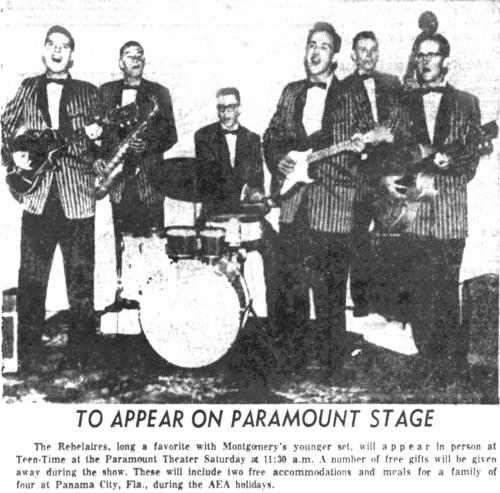 An especially notable "Teen Time" guest artist was Felton Jarvis. Felton recorded several records including "Honest John, the Workin's Man's Friend" (a ditty about a car salesman) and "Dimples" (covering John Lee Hooker's R&B classic). Felton appeared at "Teen Time" twice, always staying in a cheap room at a cheap hotel near the theater. Sonny Bozeman's family would invite him to their home to eat dinner after the show. Felton was never a successful recording artist but he did become Elvis Presley's right hand and A&R person in 1963! Regrettably he died a few years later but he'll always be fondly remembered. Click on the following link for an article about Felton that appeared a few years ago: Felton Jarvis - The Man Behind the Music.
An especially notable "Teen Time" guest artist was Felton Jarvis. Felton recorded several records including "Honest John, the Workin's Man's Friend" (a ditty about a car salesman) and "Dimples" (covering John Lee Hooker's R&B classic). Felton appeared at "Teen Time" twice, always staying in a cheap room at a cheap hotel near the theater. Sonny Bozeman's family would invite him to their home to eat dinner after the show. Felton was never a successful recording artist but he did become Elvis Presley's right hand and A&R person in 1963! Regrettably he died a few years later but he'll always be fondly remembered. Click on the following link for an article about Felton that appeared a few years ago: Felton Jarvis - The Man Behind the Music.
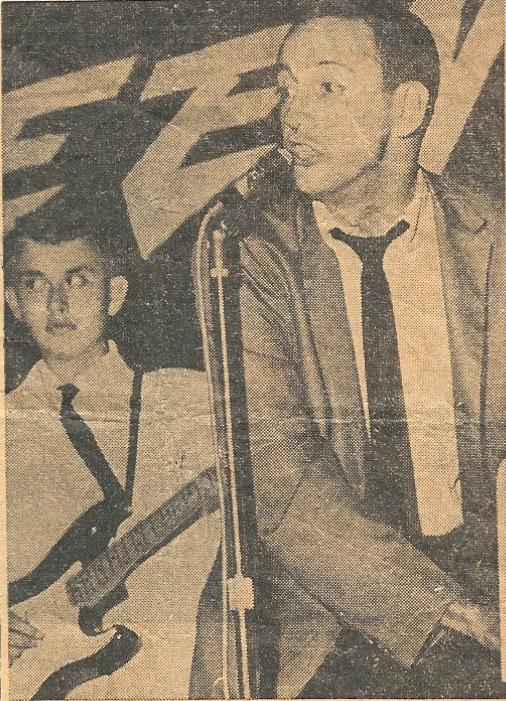 The Continentals were among several early Montgomery rock and roll bands. The group came together somewhat by chance. Sonny Bozeman (guitar) had been playing for several years and was a friend of Damon Ward (guitar). Damon enjoyed the reputation of being one of the best guitarists in town. He had been a student of the legendary Lamar Morris, who later became guitarist for Hank Williams, Jr.'s Bama Band.They jammed regularly with another excellent young guitarist, Billy Howard. Damon seemed to know everyone connected to music and was asked to form a group in July 1960 to accompany Ray Stevens at “Teen Time,” a regular Saturday morning stage show at the Paramount Theater and broadcast live on WHHY radio. Damon agreed, and he, Billy, and Sonny rehearsed enough songs to cover their set prior to Ray's stage appearance. They lacked drums, but had heard of a young local drummer, Carlton Bridges. Damon, being the only member old enough to drive, picked Carlton up the morning of the stage show and while Damon drove, Sonny walked him through their set. Amazingly, all ended well, as he turned out to be a great drummer. Ray Stevens, even though young himself, was a pro and coached the band through his songs. The “Teen Time” program that day (July 31, 1960) was packed and reported to be the largest audience ever with standing room only in the large and lovely theater. Regrettably, Damon left Montgomery shortly thereafter to join the Air Force.Sonny assumed lead guitar role and recruited a friend, Ronnie Myers (guitar), to join the band. Shortly thereafter, pianist Henry Loftin joined the group. Others joined the group at different times including John Thorington (sax), Bill Smith (guitar), Bobby Rosser (guitar), Guy Thompson (drums), and Steve Whaley (drums). Loftin brought an amazing repertoire of so-called "race music" that included artists such as Hank Ballard, John Lee Hooker, Ray Charles, Howlin' Wolf, and Buster Brown. Previously the group had focused on "white music" Top 40 and instrumentals by groups such as the Ventures and Duane Eddy. The group enjoyed great popularity around town but eventually disbanded in 1962.
The Continentals were among several early Montgomery rock and roll bands. The group came together somewhat by chance. Sonny Bozeman (guitar) had been playing for several years and was a friend of Damon Ward (guitar). Damon enjoyed the reputation of being one of the best guitarists in town. He had been a student of the legendary Lamar Morris, who later became guitarist for Hank Williams, Jr.'s Bama Band.They jammed regularly with another excellent young guitarist, Billy Howard. Damon seemed to know everyone connected to music and was asked to form a group in July 1960 to accompany Ray Stevens at “Teen Time,” a regular Saturday morning stage show at the Paramount Theater and broadcast live on WHHY radio. Damon agreed, and he, Billy, and Sonny rehearsed enough songs to cover their set prior to Ray's stage appearance. They lacked drums, but had heard of a young local drummer, Carlton Bridges. Damon, being the only member old enough to drive, picked Carlton up the morning of the stage show and while Damon drove, Sonny walked him through their set. Amazingly, all ended well, as he turned out to be a great drummer. Ray Stevens, even though young himself, was a pro and coached the band through his songs. The “Teen Time” program that day (July 31, 1960) was packed and reported to be the largest audience ever with standing room only in the large and lovely theater. Regrettably, Damon left Montgomery shortly thereafter to join the Air Force.Sonny assumed lead guitar role and recruited a friend, Ronnie Myers (guitar), to join the band. Shortly thereafter, pianist Henry Loftin joined the group. Others joined the group at different times including John Thorington (sax), Bill Smith (guitar), Bobby Rosser (guitar), Guy Thompson (drums), and Steve Whaley (drums). Loftin brought an amazing repertoire of so-called "race music" that included artists such as Hank Ballard, John Lee Hooker, Ray Charles, Howlin' Wolf, and Buster Brown. Previously the group had focused on "white music" Top 40 and instrumentals by groups such as the Ventures and Duane Eddy. The group enjoyed great popularity around town but eventually disbanded in 1962.
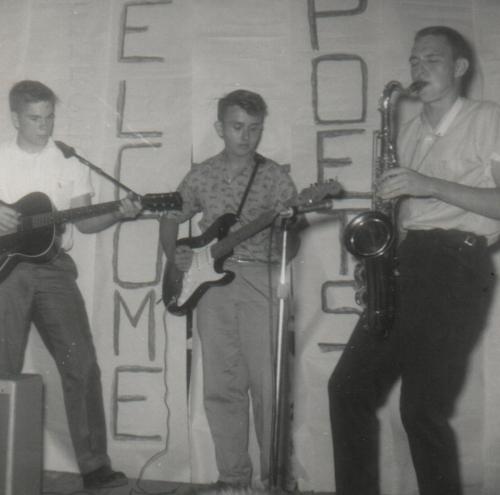
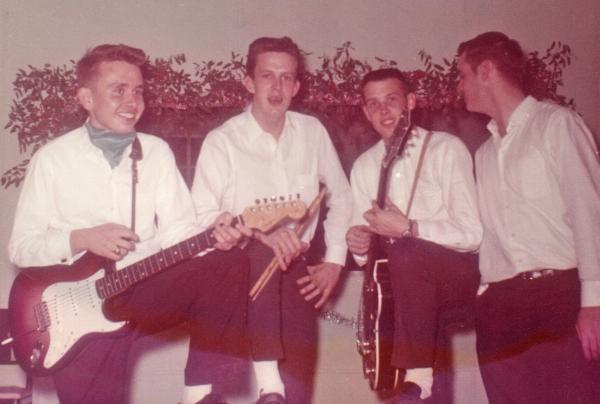
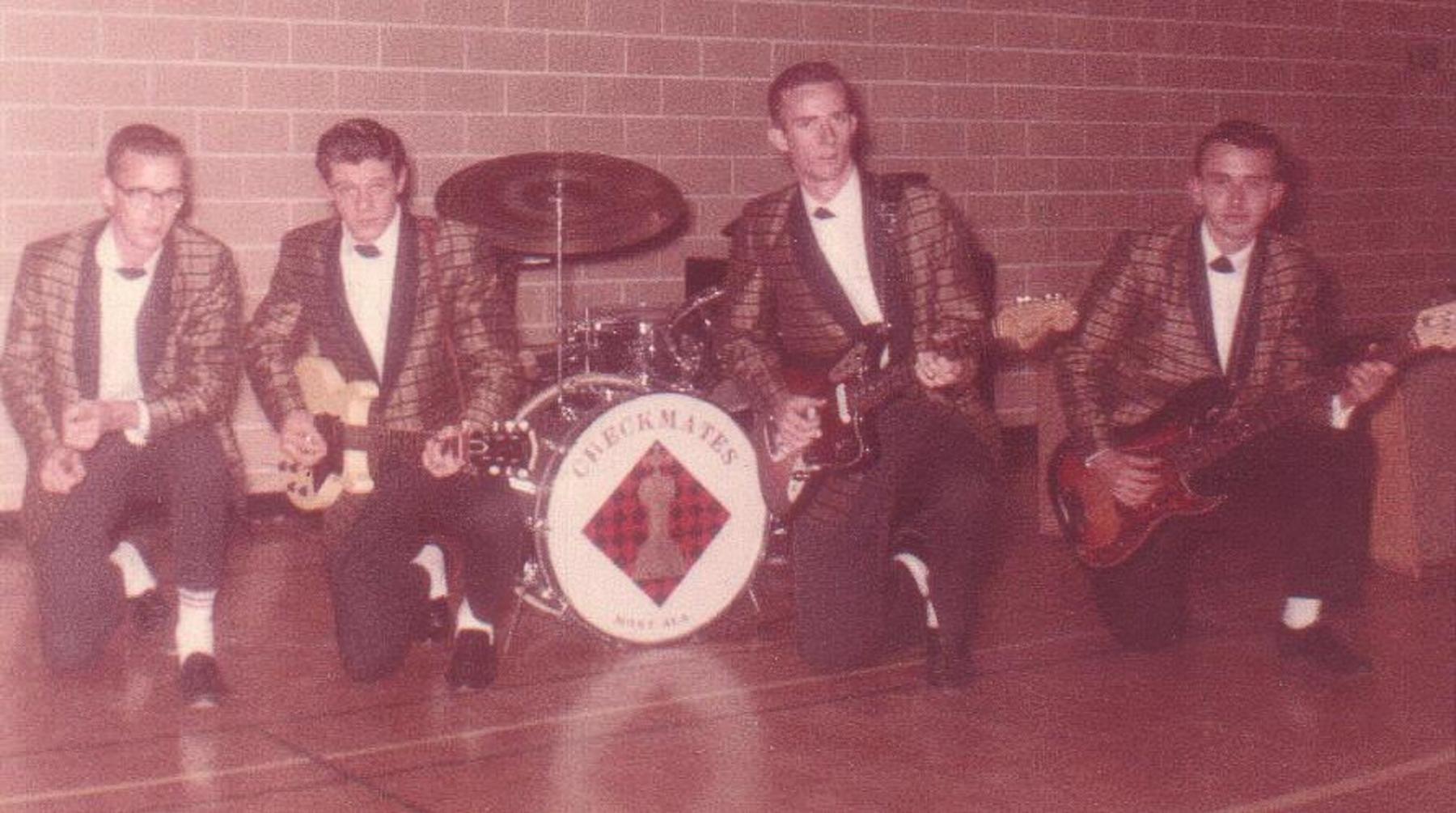 The Checkmates had their beginning in fall 1962 in Montgomery, growing, in part, from
an earlier band, The Continentals. Original members included Tommy Culp (guitar and vocals),
Jimmy Britton (guitar), Sonny Bozeman (Fender bass), and Steve Whaley (drums). Culp and
Britton had worked together as had Whaley and Bozeman as part of the local crew of
Montgomery garage/teen bands.
The Checkmates had their beginning in fall 1962 in Montgomery, growing, in part, from
an earlier band, The Continentals. Original members included Tommy Culp (guitar and vocals),
Jimmy Britton (guitar), Sonny Bozeman (Fender bass), and Steve Whaley (drums). Culp and
Britton had worked together as had Whaley and Bozeman as part of the local crew of
Montgomery garage/teen bands. 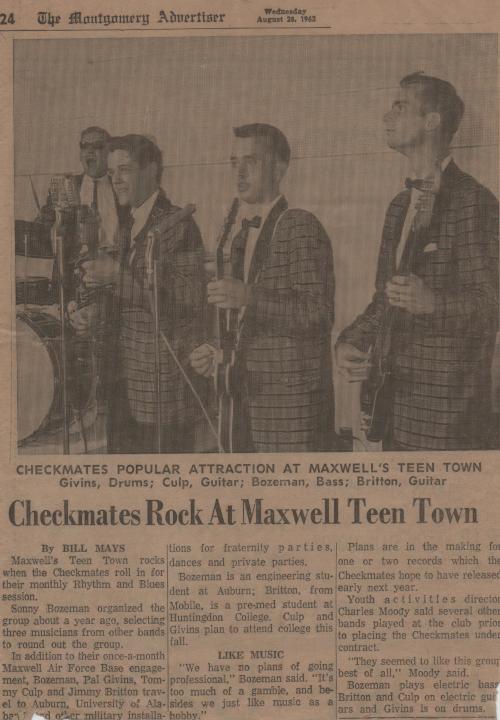 In 1963, another local drummer, Pal Given, replaced Whaley
(who had joined the Marines) on drums. Other drummers would also be used on occasion
including Charles Mann, and John Wise. Henry Loftin joined the group from time to time on
both bass and piano. Bozeman also played piano and later moved from bass to lead guitar.
Britton assumed the role of bass player, as that was his preferred instrument. Bobby Phillips, a
Huntingdon College student, later joined The Checkmates on tenor sax. The basic repertoire of
the Checkmates, like most groups of the period, was guitar-oriented surf music (Ventures and
Beach Boys sounds), R&B covers (Chuck Berry, Jimmy Reed, James Brown, and similar, Bill
Doggett instrumentals) and everything the Beatles recorded after they became popular. The
musical interest of the majority of the band was blues and the styles of Ray Charles and James
Brown. Culp, however, preferred the popular British music of the day. Gigs were fairly plentiful
at local dances, teen clubs, Maxwell and Gunter Air Force Bases, fraternities, school events, and
private parties. The band would play anywhere-even once on the bed of a flatbed truck for a
discount department store opening! Different musical interests led to the group's disbanding in
fall 1964.
In 1963, another local drummer, Pal Given, replaced Whaley
(who had joined the Marines) on drums. Other drummers would also be used on occasion
including Charles Mann, and John Wise. Henry Loftin joined the group from time to time on
both bass and piano. Bozeman also played piano and later moved from bass to lead guitar.
Britton assumed the role of bass player, as that was his preferred instrument. Bobby Phillips, a
Huntingdon College student, later joined The Checkmates on tenor sax. The basic repertoire of
the Checkmates, like most groups of the period, was guitar-oriented surf music (Ventures and
Beach Boys sounds), R&B covers (Chuck Berry, Jimmy Reed, James Brown, and similar, Bill
Doggett instrumentals) and everything the Beatles recorded after they became popular. The
musical interest of the majority of the band was blues and the styles of Ray Charles and James
Brown. Culp, however, preferred the popular British music of the day. Gigs were fairly plentiful
at local dances, teen clubs, Maxwell and Gunter Air Force Bases, fraternities, school events, and
private parties. The band would play anywhere-even once on the bed of a flatbed truck for a
discount department store opening! Different musical interests led to the group's disbanding in
fall 1964.
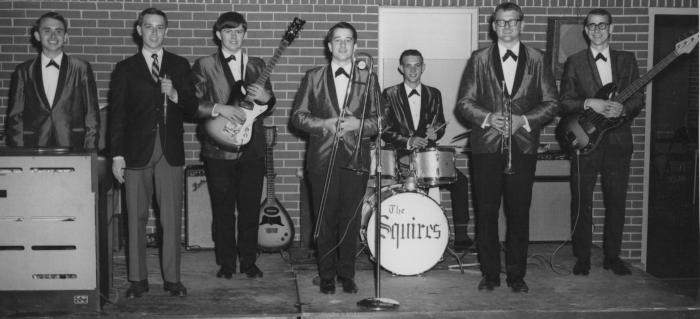 The different (and divided) musical interests of the Checkmates led to the formation of a
new group in late 1964 - The Squires. A new vocalist, Errol Dee, from New Orleans (then an AF
lieutenant stationed at Maxwell AFB) brought an entirely different sound to the group (Errol
played trumpet also). Virgil Cole was recruited on lead guitar and Bozeman moved to
Hammond organ and piano.
The different (and divided) musical interests of the Checkmates led to the formation of a
new group in late 1964 - The Squires. A new vocalist, Errol Dee, from New Orleans (then an AF
lieutenant stationed at Maxwell AFB) brought an entirely different sound to the group (Errol
played trumpet also). Virgil Cole was recruited on lead guitar and Bozeman moved to
Hammond organ and piano. 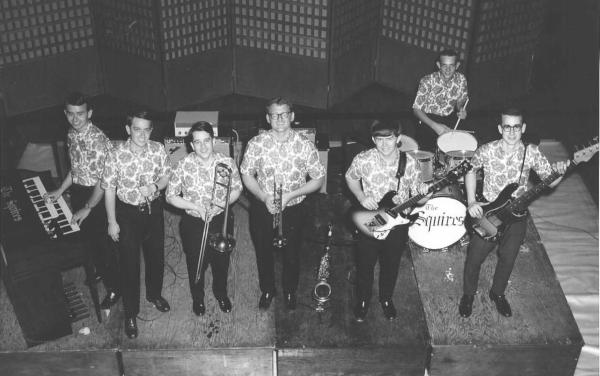 Charles Brashear was added on trumpet to complete the new 7-
member group that still included Pal Given (drums), Jimmy Britton (bass), and Bobby Phillips
(sax). Paradoxically, though the Squires were a much more professional group with a bigger
sound (due to the horns and organ), they seemed to more oriented to club venues. They also
did not appeal as much to the high school age groups who preferred the new wave of music
from England. The Squires were, in some respects, outdated when they began (even though the
instrumentation permitted cover of almost any popular song). The group's songbook included
no Beatles or Stones covers and was almost exclusively R&B and Black music (Brown, Charles,
Redding, Pickett, etc.). The Squires continued to perform until late 1966/early 1967 with
various and different lineups (John Owens and later, Sonny Royal, replaced Phillips on tenor
sax); Ed Thacker (also a Huntingdon student) replaced Britton on Fender bass; Murray Tarleton
(a young musician from Lee High School where they had an amazing music program under
Johnny Long) replaced Cole on lead guitar; Eddie Wolfford (also from Lee High School) replaced
Brashear on trumpet; and Bernie McDonough replaced Given on drums). In addition, Rod
Henley joined the group in its latter days on trombone.
Charles Brashear was added on trumpet to complete the new 7-
member group that still included Pal Given (drums), Jimmy Britton (bass), and Bobby Phillips
(sax). Paradoxically, though the Squires were a much more professional group with a bigger
sound (due to the horns and organ), they seemed to more oriented to club venues. They also
did not appeal as much to the high school age groups who preferred the new wave of music
from England. The Squires were, in some respects, outdated when they began (even though the
instrumentation permitted cover of almost any popular song). The group's songbook included
no Beatles or Stones covers and was almost exclusively R&B and Black music (Brown, Charles,
Redding, Pickett, etc.). The Squires continued to perform until late 1966/early 1967 with
various and different lineups (John Owens and later, Sonny Royal, replaced Phillips on tenor
sax); Ed Thacker (also a Huntingdon student) replaced Britton on Fender bass; Murray Tarleton
(a young musician from Lee High School where they had an amazing music program under
Johnny Long) replaced Cole on lead guitar; Eddie Wolfford (also from Lee High School) replaced
Brashear on trumpet; and Bernie McDonough replaced Given on drums). In addition, Rod
Henley joined the group in its latter days on trombone. 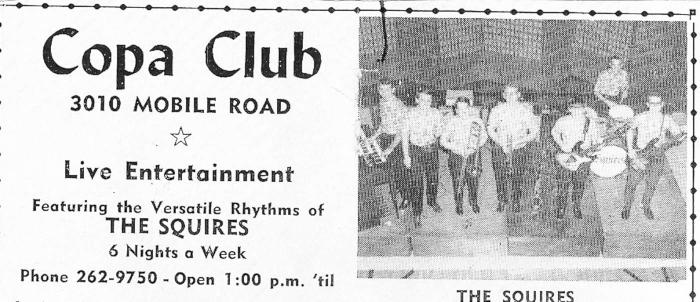 In the club venue, the Squires played
The Fiesta-A-Go Club for several months and at Montgomery's infamous Copa Club (a big,
rough but very interesting place allegedly linked to organized crime) for almost a year. By early
1967, personal issues and the general care and feeding of a group the size of the Squires took
their toll. Gigs that could make it financially worthwhile for this size group were hard to find. By
early 1967 the tasks of recruiting replacement musicians and rehearsals proved impossible and
the group gradually ceased to perform.
In the club venue, the Squires played
The Fiesta-A-Go Club for several months and at Montgomery's infamous Copa Club (a big,
rough but very interesting place allegedly linked to organized crime) for almost a year. By early
1967, personal issues and the general care and feeding of a group the size of the Squires took
their toll. Gigs that could make it financially worthwhile for this size group were hard to find. By
early 1967 the tasks of recruiting replacement musicians and rehearsals proved impossible and
the group gradually ceased to perform.
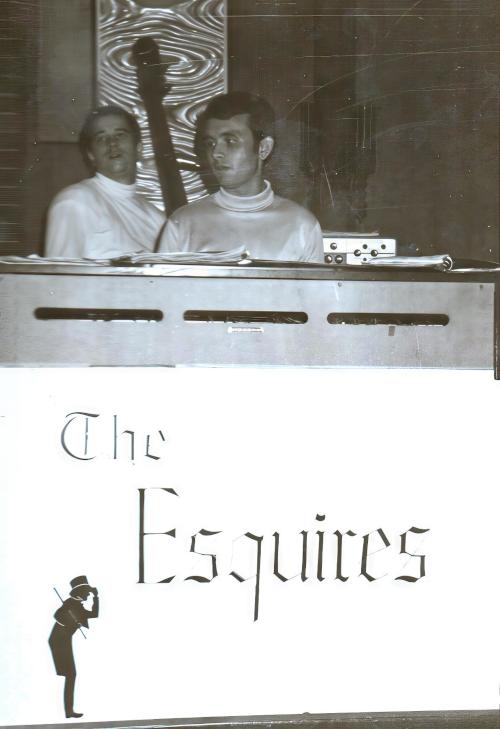 After the Squires dissolved in early 1967, a few of the members “gigged” in different groups over the next few months. Bozeman (on Hammond organ), during the summer of 1967, played standards at Antonio's Lounge with Doug Pouncey (trumpet), George McCain (drums), and a tenor player remembered only as "Ace." In the fall of 1967, Bozeman was recruited to join Sonny Greer (vocals and formerly of the Rockin' Gibraltars) to form a successful club band, the Esquires, with Ray Goss or Rod Henley (bass) and Pal Given or Jimmy Dinkins (drums).The foursome covered top 40, R&B, and a lot of 4 Seasons material. The Esquires only played one location, the Coliseum Lounge for a year and remained together until fall 1968 when Bozeman moved to Atlanta. Interestingly, during that year, the Coliseum Lounge and the Esquires were the most popular club band in town and regularly drew large crowds.
After the Squires dissolved in early 1967, a few of the members “gigged” in different groups over the next few months. Bozeman (on Hammond organ), during the summer of 1967, played standards at Antonio's Lounge with Doug Pouncey (trumpet), George McCain (drums), and a tenor player remembered only as "Ace." In the fall of 1967, Bozeman was recruited to join Sonny Greer (vocals and formerly of the Rockin' Gibraltars) to form a successful club band, the Esquires, with Ray Goss or Rod Henley (bass) and Pal Given or Jimmy Dinkins (drums).The foursome covered top 40, R&B, and a lot of 4 Seasons material. The Esquires only played one location, the Coliseum Lounge for a year and remained together until fall 1968 when Bozeman moved to Atlanta. Interestingly, during that year, the Coliseum Lounge and the Esquires were the most popular club band in town and regularly drew large crowds.
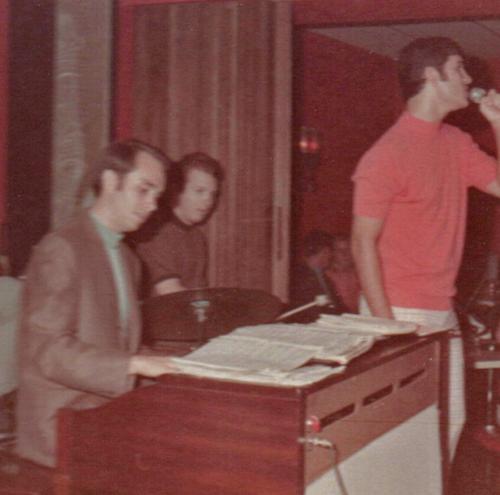
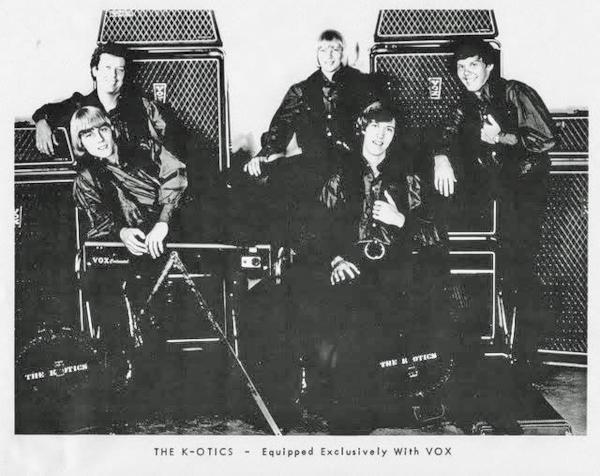 Another popular group in the Montgomery area and beyond was the K-Otics, a band
that was founded at Troy State College (near Montgomery) in 1961. They ended up with a
lineup of musicians from Tuskegee and Tallassee (also Montgomery) and had the ultimate
experiences of recording a hit record and performing with top-level groups. Members of the
“classic” lineup of the K-Otics were Ray Goss (bass), Glenn Griffin (keyboards), Tommy Mann
(vocals), Marvin Taylor (guitar), and Kim Venable (drums). The K-Otics straddled the before-and-
after chronological line of the Fab Four's iconic TV performance, having played in central and
south Alabama for a number of years. The roster of players changed, of course, and the band
ultimately ended up under the aegis of lead singer Tommy Mann. As mentioned earlier, Goss
would later join Bozeman and Grier in the Esquires. The “famous” version of the K-Otics
recorded a cover of a beach music classic, “Double Shot,” and competed nationally in 1966 with
a version of the same song as recorded by the Swingin' Medallions of South Carolina. The spring
1966 edition of the “Big Bam Show” featured the K-Otics performing with the Lovin' Spoonful,
Paul Revere & the Raiders, and other pop music luminaries.
Another popular group in the Montgomery area and beyond was the K-Otics, a band
that was founded at Troy State College (near Montgomery) in 1961. They ended up with a
lineup of musicians from Tuskegee and Tallassee (also Montgomery) and had the ultimate
experiences of recording a hit record and performing with top-level groups. Members of the
“classic” lineup of the K-Otics were Ray Goss (bass), Glenn Griffin (keyboards), Tommy Mann
(vocals), Marvin Taylor (guitar), and Kim Venable (drums). The K-Otics straddled the before-and-
after chronological line of the Fab Four's iconic TV performance, having played in central and
south Alabama for a number of years. The roster of players changed, of course, and the band
ultimately ended up under the aegis of lead singer Tommy Mann. As mentioned earlier, Goss
would later join Bozeman and Grier in the Esquires. The “famous” version of the K-Otics
recorded a cover of a beach music classic, “Double Shot,” and competed nationally in 1966 with
a version of the same song as recorded by the Swingin' Medallions of South Carolina. The spring
1966 edition of the “Big Bam Show” featured the K-Otics performing with the Lovin' Spoonful,
Paul Revere & the Raiders, and other pop music luminaries.
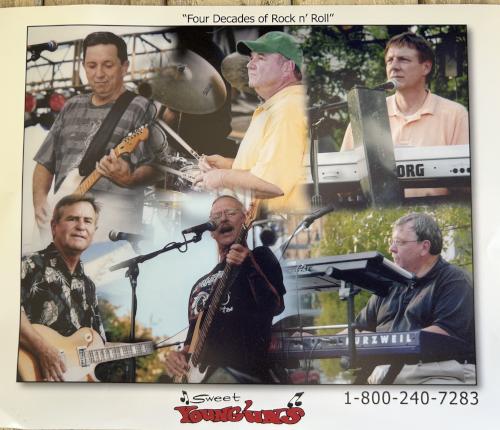 The Sweet Young'Uns were another popular group in the Montgomery area in the
1960s and continue to perform. The band was formed in the summer of 1966 with members
from Tallassee and Union Springs. Between 1967 and 1969 the band put out three single
records and an album in 1968. Original members who are still playing are Ron Howard
(Keyboards), Johnny Hassett (Bass), and Larry Hoyle (guitar). Current additional members are
Craig Young (guitar) and Johnny Long Jr. (keyboards); all members do vocals. Chris Seymour was
drummer for over 30 years is deceased now. Band members had real jobs and families but none
moved far away so they continued to be active to the present day. The Sweet Young'Uns played
City Fests, conventions, private events, weddings, private parties and shows with many big-time
entertainers. They have played all over the Southeast and also as far north as Chicago and even
played at Alabama Governor Bob Riley's 2nd Inaugural Ball. The group doesn't perform as much
as they used to, but plan on playing as long as they enjoy it. Personnel in Montgomery-area bands of the late 1960s often seemed to play musical chairs.
The Sweet Young'Uns were another popular group in the Montgomery area in the
1960s and continue to perform. The band was formed in the summer of 1966 with members
from Tallassee and Union Springs. Between 1967 and 1969 the band put out three single
records and an album in 1968. Original members who are still playing are Ron Howard
(Keyboards), Johnny Hassett (Bass), and Larry Hoyle (guitar). Current additional members are
Craig Young (guitar) and Johnny Long Jr. (keyboards); all members do vocals. Chris Seymour was
drummer for over 30 years is deceased now. Band members had real jobs and families but none
moved far away so they continued to be active to the present day. The Sweet Young'Uns played
City Fests, conventions, private events, weddings, private parties and shows with many big-time
entertainers. They have played all over the Southeast and also as far north as Chicago and even
played at Alabama Governor Bob Riley's 2nd Inaugural Ball. The group doesn't perform as much
as they used to, but plan on playing as long as they enjoy it. Personnel in Montgomery-area bands of the late 1960s often seemed to play musical chairs.

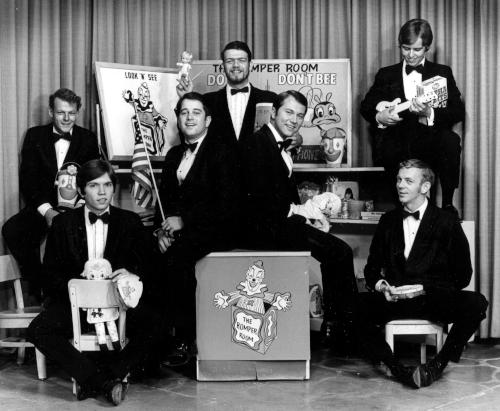 One of Montgomery's many outstanding musicians is Rod Henley. Rod is from a musical
family; his mother, June, was a singer with the Maxwell AF Band in the late 40's and 50's, as
well as with Johnny Long's combo in the 50-60s. Rod's first commercial combo was the In
Crowd playing at The Keyhole Club, a popular downtown Montgomery lounge, in early 1967.
Members also included Errol Dee (vocals), Ed Thacker (bass), Stan Henley (drums), and Medley
Curry (trombone). The group also played for several months at the Coliseum Lounge after the
Esquires and the Reign. Errol was later replaced by Eddie Wohlford and George McCain took
over the drum chair. Upcoming STYX star Tommy Shaw played guitar -- his first professional
band job! The band was renamed Montgomery East (for new subdivision in Montgomery) in
1969 and began residency in Fort Walton Beach at Bacon's By the Sea. Personnel included
Medley Curry (trombone), Bill Hatcher (bass and guitar), Stan Henley (drums), and Rod on grand
piano. Later personnel included Ken McCord (bass), Bob Bevins (saxophone), and Kris Lennox
(vocals). Montgomery East was very successful on the Emerald Coast. Rod continues his
successful music journey in Las Vegas.
One of Montgomery's many outstanding musicians is Rod Henley. Rod is from a musical
family; his mother, June, was a singer with the Maxwell AF Band in the late 40's and 50's, as
well as with Johnny Long's combo in the 50-60s. Rod's first commercial combo was the In
Crowd playing at The Keyhole Club, a popular downtown Montgomery lounge, in early 1967.
Members also included Errol Dee (vocals), Ed Thacker (bass), Stan Henley (drums), and Medley
Curry (trombone). The group also played for several months at the Coliseum Lounge after the
Esquires and the Reign. Errol was later replaced by Eddie Wohlford and George McCain took
over the drum chair. Upcoming STYX star Tommy Shaw played guitar -- his first professional
band job! The band was renamed Montgomery East (for new subdivision in Montgomery) in
1969 and began residency in Fort Walton Beach at Bacon's By the Sea. Personnel included
Medley Curry (trombone), Bill Hatcher (bass and guitar), Stan Henley (drums), and Rod on grand
piano. Later personnel included Ken McCord (bass), Bob Bevins (saxophone), and Kris Lennox
(vocals). Montgomery East was very successful on the Emerald Coast. Rod continues his
successful music journey in Las Vegas.
Were you part of Montgomery's garage band scene? Do you have stories, photos, or recordings from this golden era? We're dedicated to preserving these precious musical memories for future generations.
To honor the musicians, fans, and venues that made Montgomery's garage band era special. Every photograph, every story, every memory helps keep this important piece of musical history alive for new generations to discover and appreciate.